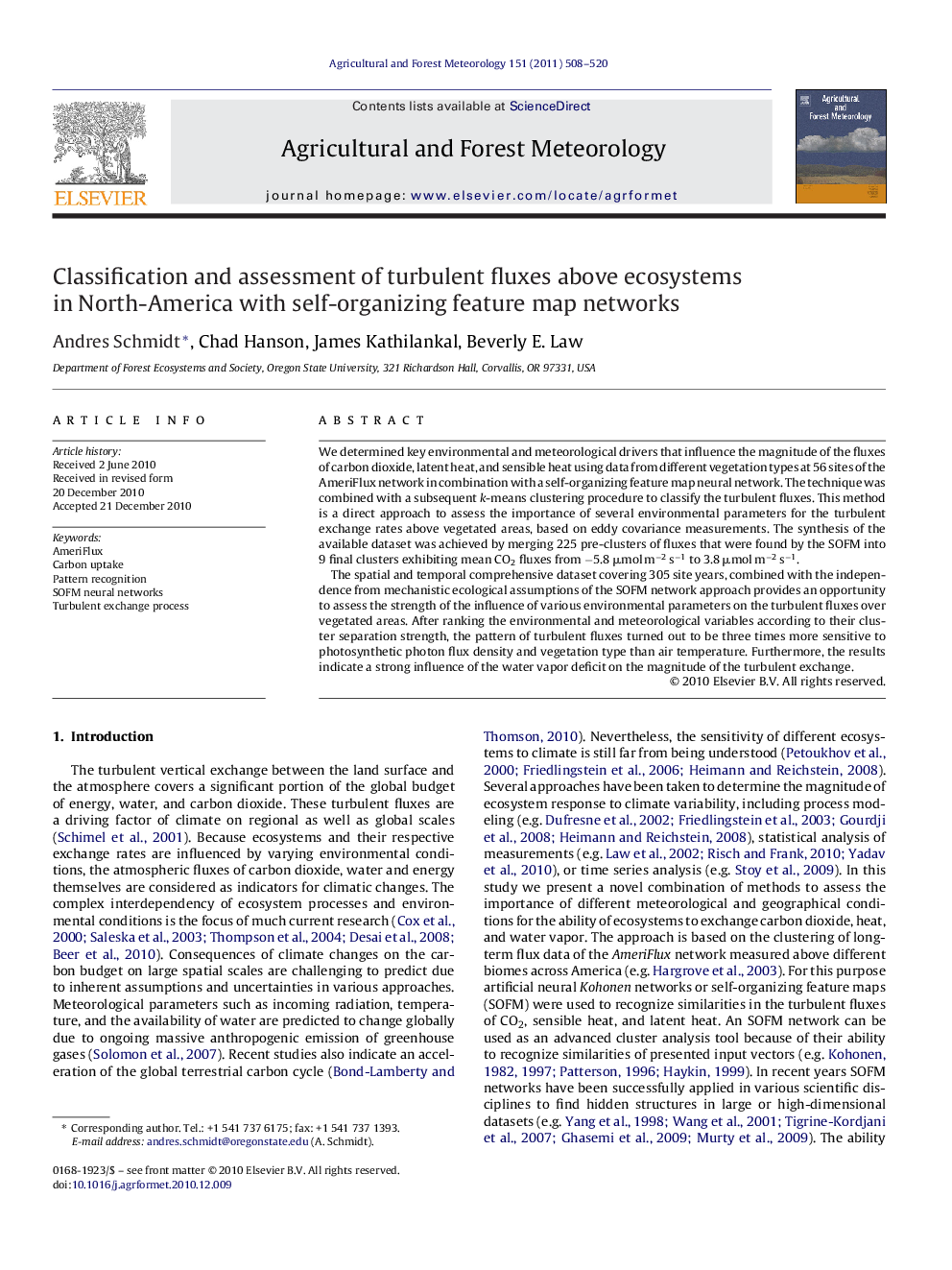| کد مقاله | کد نشریه | سال انتشار | مقاله انگلیسی | نسخه تمام متن |
|---|---|---|---|---|
| 82076 | 158371 | 2011 | 13 صفحه PDF | دانلود رایگان |

We determined key environmental and meteorological drivers that influence the magnitude of the fluxes of carbon dioxide, latent heat, and sensible heat using data from different vegetation types at 56 sites of the AmeriFlux network in combination with a self-organizing feature map neural network. The technique was combined with a subsequent k-means clustering procedure to classify the turbulent fluxes. This method is a direct approach to assess the importance of several environmental parameters for the turbulent exchange rates above vegetated areas, based on eddy covariance measurements. The synthesis of the available dataset was achieved by merging 225 pre-clusters of fluxes that were found by the SOFM into 9 final clusters exhibiting mean CO2 fluxes from −5.8 μmol m−2 s−1 to 3.8 μmol m−2 s−1.The spatial and temporal comprehensive dataset covering 305 site years, combined with the independence from mechanistic ecological assumptions of the SOFM network approach provides an opportunity to assess the strength of the influence of various environmental parameters on the turbulent fluxes over vegetated areas. After ranking the environmental and meteorological variables according to their cluster separation strength, the pattern of turbulent fluxes turned out to be three times more sensitive to photosynthetic photon flux density and vegetation type than air temperature. Furthermore, the results indicate a strong influence of the water vapor deficit on the magnitude of the turbulent exchange.
Research highlights▶ In this study key environmental and meteorological drivers that influence the magnitude of the fluxes of carbon dioxide, latent heat, and sensible heat were determined using data from different vegetation types at 56 sites of the AmeriFlux network in combination with a self-organizing feature map neural network. ▶ Through statistical analysis of the cluster differences we were able to rank the available environmental parameters according to their importance on the magnitude of the turbulent exchange rates between the surface and the atmosphere within the boundary layer. ▶ The relative ranking of driving variables shows that radiation (net radiation and the PPFD) and type of vegetation are the most important parameters that determine the amount of turbulent exchange above vegetated areas.
Journal: Agricultural and Forest Meteorology - Volume 151, Issue 4, 15 April 2011, Pages 508–520